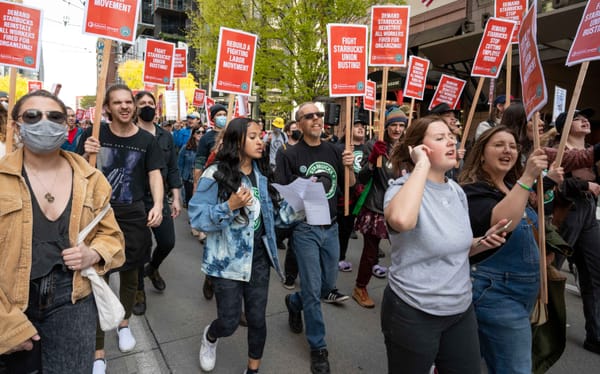On Feb. 27, Starbucks announced that it would work with Starbucks Workers United, the union which has organized 400 of the multinational chain’s US cafes since 2021, on a “foundational framework designed to achieve both collective bargaining agreements for represented stores and partners, and the resolution of litigation between the union and the company.” It signaled a major pivot by the latte behemoth following years of withering media reports on its flagrant union-busting tactics. From Jacobin to Bloomberg, labor reporters suggested this breakthrough could catalyze a unionizing drive well beyond Starbucks’s 9,700 US stores.
“There are obstacles to a broader organizing wave gaining momentum in the service sector.”
Yet there are obstacles to a broader organizing wave gaining momentum in the service sector. As encouraging as Starbucks Workers United’s initial victories appear to be, certain structural aspects of the restaurant- and retail-service industries inhibit organizing on anything close to scale that would partly make up for the steady decline of industrial unions. And the statistics cast a bleak cloud over the already-daunting task facing organized labor in unionizing these industries. At 3.2 percent, food preparation and related occupations ranked among the sectors with the lowest unionization rates in 2023, according to a report from the Bureau of Labor Statistics.
